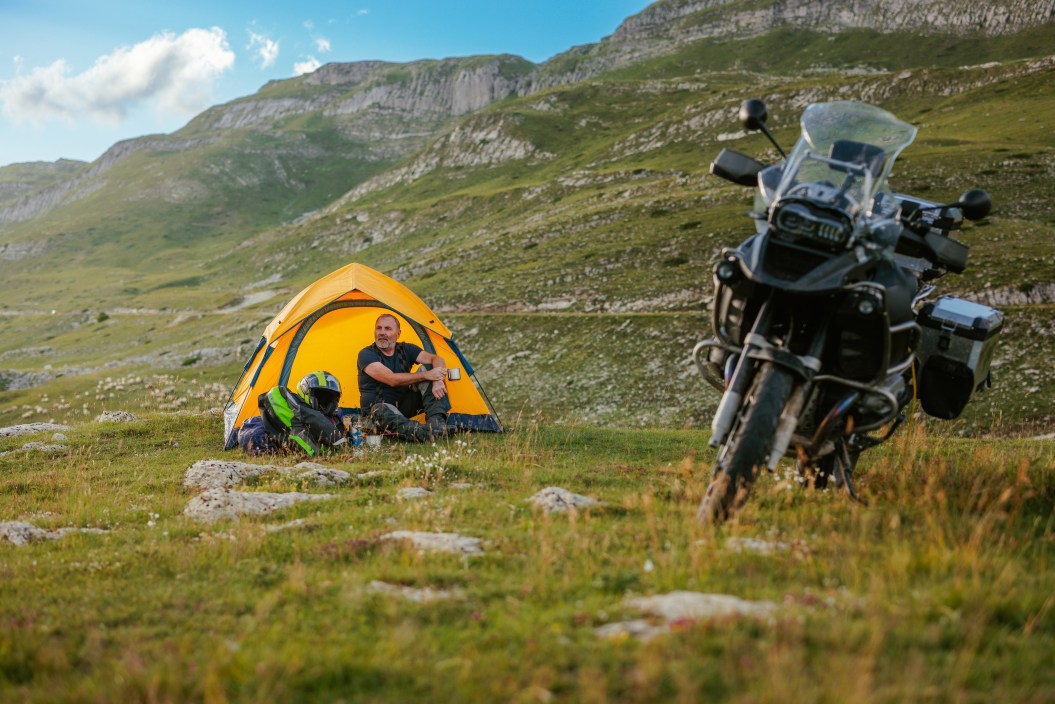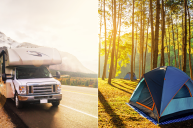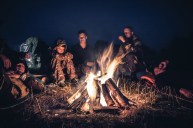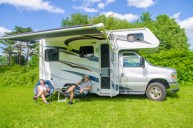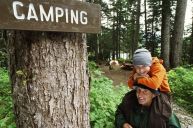Feeling the wind flying by you as you cruise down the highway is one of the great joys of hitting the open road on a motorcycle. While a motorcycle may not be everyone's go-to ride for a camping trip, motorcycle camping can be a grand adventure. We're far from new campers, and my husband loves riding his motorcycle. Combining the two makes for a magical experience.
Motorcycle camping isn't one size fits all, much like motorcycles themselves. And, indeed, there isn't a "best" motorcycle for camping. While some bikes may make for a more comfortable experience, bikers can head out on any bike, depending on what kind of experience they are looking for. Trips are limited only by what you feel comfortable doing. The biggest obstacles to adventure are knowing where to go and how to pack a motorcycle for camping. Luckily, we have a few tips to get you started.
1. Decide the Type of Camping You Want to Do
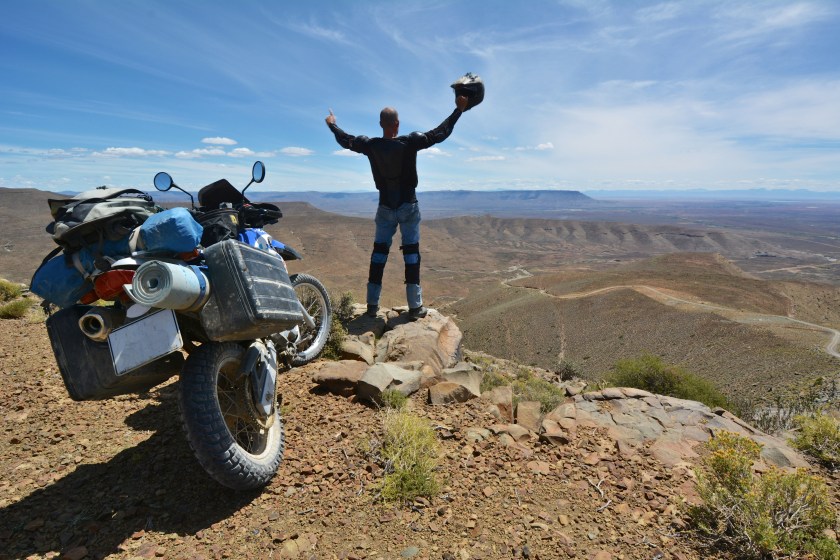
Getty Images, RainervonBrandis
Where you go and how you pack the motorcycle will depend mainly on the type of camping you want to try.
Glamping—a portmanteau of glamour and camping—requires less packing, as most sites have everything you need. Glamping spots have become very popular and entail staying in a tent, teepee, yurt, or cabin. It may be the way to go if it's your first time camping with your motorcycle, offering a lower-stress option because, basically, all you need to bring is your clothes.
Established campgrounds are easily accessed by any type of motorcycle. Amenities vary from site to site, and therefore so will your packing needs—though you'll for sure be bringing your own tent and sleeping bags. Some campgrounds are full-service with campsites, barbecues, fire rings, restrooms with showers, and more. Others are more barebones. It really just depends on the area.
Dispersed camping may be the challenge you're after, if backcountry off-road riding is more your style. These wilderness areas are generally completely unplugged and harder to get to—and completely free to use. Dispersed campsites have no electricity, no restrooms, and no real amenities. Camping in such remote locations can be either exciting or peaceful (or both!) but requires much more preparation and planning.
2. Pick Your Destination and Plan Your Route
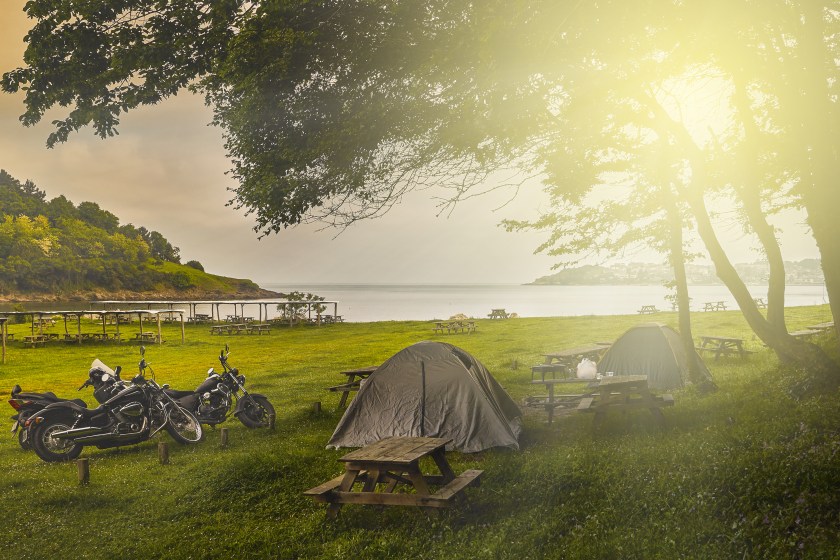
Getty Images, Kefkenadasi
Once you have an idea of the kind of camping you prefer, you'll need to pick your destination and plan how you'll get there.
For help finding motorcycle-friendly campsites, a few apps may come in handy. Recreation.gov is an all-around great resource for camping, including information on sites, permits, tickets, and tours, and day-use areas. It even includes a "build your trip" function where you enter your dates and destinations to build out your vacation.
For offroad trips, onX Offroad is a useful app for finding trails, and it can be used offline. The app allows you to customize your route, share it with friends, and mark where you're camped or parked. It offers a free seven-day trial, with two payment tiers depending on the features you'll need.
Once you know where you're going, plan the drive with enough time to get to your location before dark—no one likes setting up camp by headlight. Ideally, you don't want to ride more than six hours in one stretch, either. If you're traveling long distances, you may need to stop at a halfway point to give yourself and your bike a chance to rest. You'll also want to account for how many miles your bike can go on a single tank of gas and loosely plan your pitstops accordingly.
3. Pre-Plan What to Eat—And How to Cook
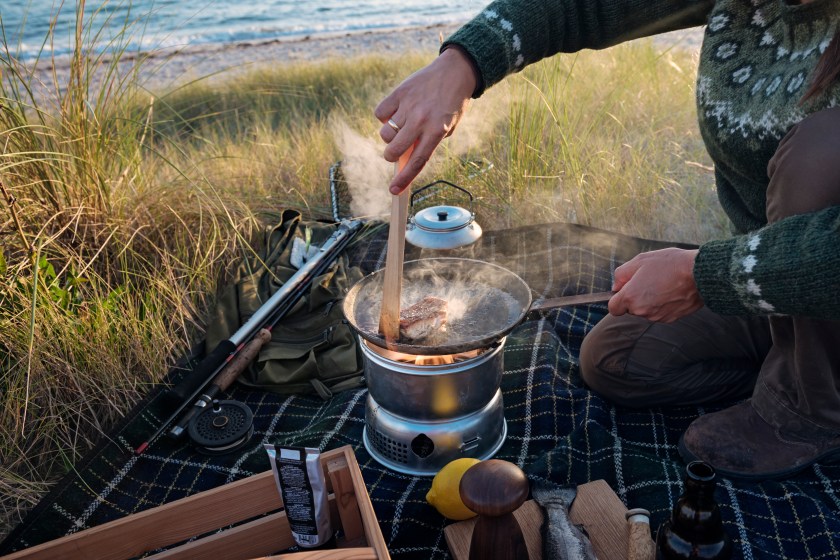
Getty Images, Clark and Company
Unlike with RV or car camping, camping with a motorcycle doesn't leave a whole lot of room for an elaborate kitchen setup. Not that taking your favorite camp cooking gear isn't possible; you just have to budget space for what's important to you. Some moto campers prefer a simple camp stove, such as the Jetboil Flash, which is often used for backpacking.
Make sure you bring along plenty of water. You never know what the water situation will look like at the campground. If you're dispersed camping, you'll likely not have access to clean water, so you may need a filtration system such as a Lifestraw.
Critters are easily drawn to campground scents, so make sure all food is stored properly. Motorcycle campers should observe the Leave No Trace principles to ensure these remote places stay clean and usable for generations to come.
4. Pack the Motorcycle for Camping
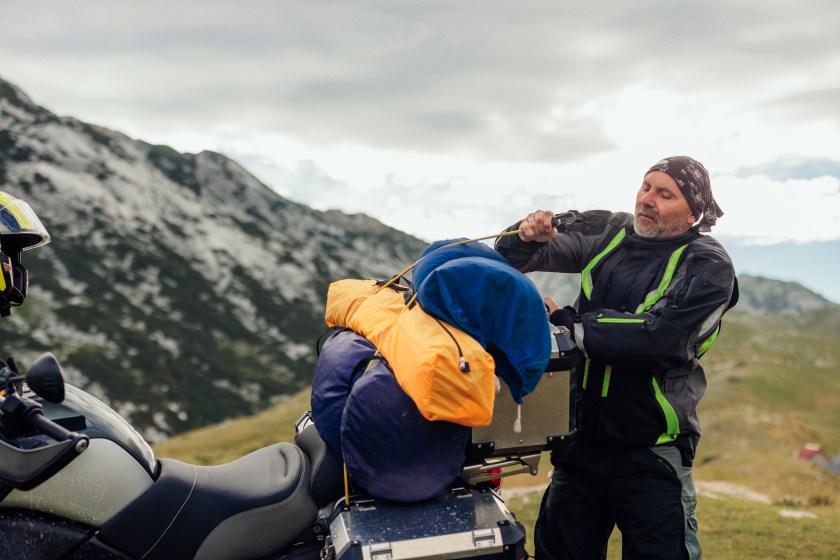
Getty Images, Dimensions
As bikers are keenly aware, motorcycles have limited storage, and each bike is different. No matter your storage setup, there are a few things to remember.
First, your camping gear should be put in waterproof storage, such as dry bags, to keep everything safe from rain from when you leave to when you arrive at the campground. Stove fuel canisters need to be stored away from your exhaust for obvious reasons; if those combust, you'll have many more problems than just losing your gear.
Weight should be evenly distributed on either side of your bike if you're using your saddlebags. If you can, pack as much as possible on top of the bike instead of the sides to maintain balance. My husband is a fan of loading his backpack up with his gear and wearing that while he rides. He leaves space in his saddlebags and tank bag for other riding gear and essentials.
What you bring to sleep in and on depends on personal preference. Some people want as little setup as possible when they roll up to a campground after a long day of traveling, while others like to have the full camping experience with a regular-size tent and sleeping bags. Because motorcycle travel has become so popular over the last couple of years, some manufacturers are even creating specialized motorcycle camping tents. The same goes for if you like sleeping in a sleeping bag or prefer to add an inflatable pad.
Some motorcycle camping gear you might bring along:
- Food and snacks
- Water bottle
- Camp stove and cookware
- First aid kit
- Headlamp
- Chargers (phone, solar charger)
- Sleeping bag and sleeping pad
- Hammock or two-person tent
Beyond the camping gear, don't forget to pack layers and a pair of sneakers, and you'll be ready for your next motorcycle camping adventure.
